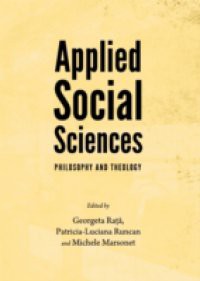This volume, Applied Social Sciences: Philosophy and Theology, provides the reader with an important set of essays related to the two aforementioned fields of study. Aesthetics plays a key role in contemporary philosophy and several authors examine its various aspects, such as the question of identification of works of art; the concept of "social aesthetics"; the social therapeutic function that art can have; and the relationships among hermeneutics, aesthetics and communication sciences. Other papers deal with ethical issues, such as the role of human values in applied ethics and moral determinations in public life. The meaning and role of postmodernism in philosophy and society is examined at length in various contributions to the volume, and the same is true for phenomenology at large. Even the theoretical seduction and practical failure of Marxism is addressed, while anthropological issues are studied with reference to truth and other key philosophical concepts. John Searle's theory of intentionality is seen as a factor for creating social institutions, and the real meaning of "globalization" is investigated in another article. Many essays deal directly with theological and religious topics. For instance the alleged "illusion" of religion versus its persistency is analyzed, along with the current relations between Church and civil government in Romania, the presence of different forms of Christianity in the Romanian nation, the dialogue between social theology and anthropological research, and the antinomic nature of the Church. All papers included in the volume are original and open new perspectives on the many issues addressed by the authors. Even the philosophical styles are different: hermeneutics, analytic philosophy, historical approach, postmodernism, communication theory and linguistic approach. Some papers are theoretical and others have a more empirical or historical flavour. There is however an underlying unity because they all purport to provide new ideas to professionals involved in the socio-humanistic field. The information is divided into chapters in order to help readers to form by themselves an image of the issues that are studied. However, the volume is not addressed only to specialists, and is accessible to a wider public interested in an interdisciplinary approach.

